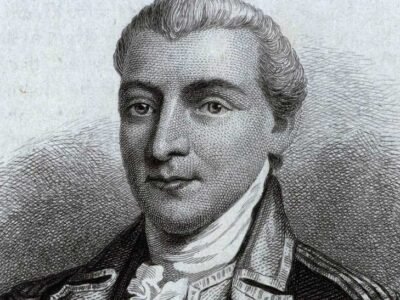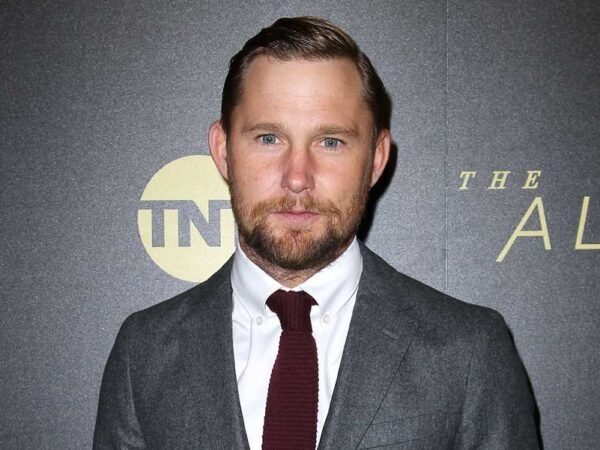When television audiences first met the charming cowboy Dusty Farlow on Dallas, few could have predicted the lasting impact this character would have on popular culture. Behind that memorable role was Jared Christopher Martin, an actor whose career spanned decades and genres, making him one of television’s most recognizable faces.
Born December 21, 1941, in Manhattan, Martin didn’t just stumble into stardom. His path from a creative household to becoming a celebrated actor and television star was marked by determination, talent, and a few lucky breaks that every successful performer needs. What made Martin special wasn’t just his good looks or natural charisma – though he had both in spades – but his ability to bring depth to every character he portrayed.
The entertainment world said goodbye to this remarkable performer on May 24, 2017, when Martin passed away at age 75. But his legacy lives on through the countless hours of television that continue to entertain new generations of viewers. From science fiction epics to primetime soap operas, Martin proved that a truly gifted actor could excel in any genre.
Early Life and Education of the Rising Star
Growing up in Manhattan wasn’t exactly typical for most future television stars, but then again, Jared Martin’s family wasn’t exactly typical either. His father, Charles Elmer Martin, made his living creating cover art and cartoons for The New Yorker – not a bad gig for an artist in mid-20th century New York. His mother, Florence Taylor, pursued her own artistic passions while managing the household.
You might say creativity ran in the family genes. By age ten, young Jared was already getting his feet wet in local children’s theater. When he hit thirteen, his parents gave him a choice that would shape his entire future: learn piano or stick with acting. Most kids might have gone with the easier option, but Martin chose the stage. Smart move, as it turned out.
The Putney School in Vermont became his next stop, where he juggled his love for theater with a newfound interest in sports. Later, at Columbia University, Martin faced another crossroads. He could try to excel at both athletics and acting, or focus entirely on one. The stage won again – a decision that would prove absolutely crucial to his future success.
What made his college years even more significant was his roommate situation. Martin bunked with a guy named Brian De Palma, who was already showing signs of the filmmaking genius he’d later become. This friendship would open doors that might have stayed locked for a young actor trying to make it in the brutal world of entertainment.
Breaking into Hollywood – From Theater to Television
Martin’s college years at Columbia University proved pivotal in more ways than one. His roommate was Brian De Palma, who would later become a renowned filmmaker. This friendship opened doors that might otherwise have remained closed to a young actor trying to establish himself in the competitive entertainment industry.
After graduating from Columbia in 1965, Martin initially took a practical approach to his career by working at The New York Times as a copy boy and thumbnail book reviewer for the Sunday edition. However, the excitement and passion he felt for theater proved too strong to ignore. He left his newspaper position to join a summer stock theater company in Cape May, New Jersey.
His theatrical journey continued with a season at the Boston Classical Repertory, where he honed his craft alongside other aspiring performers. Eventually, he rejoined Joseph Papp at the newly established Public Theater in Manhattan, where he had previously apprenticed during his college years. At the Public Theater, Martin took on significant roles, including playing Laertes in a modern rock-disco adaptation of Hamlet that featured Martin Sheen and Cleavon Little in the title role.
The transition from theater to film came through his connection with Brian De Palma, who cast Martin in his 1966 debut feature film, “Murder à la Mod.” Martin later recalled the experience with characteristic humor, describing his role as “a mad photographer-murderer who liked to lick the blood off his victims’ bodies.” De Palma used Hershey syrup for blood effects and paid Martin $35 for his performance, a modest beginning to what would become a successful screen career.
The Dallas Phenomenon – Dusty Farlow’s Impact on Television
Sometimes lightning strikes when you least expect it. For Jared Martin, that bolt came in 1979 when casting directors at CBS offered him what seemed like a small role on their hit show Dallas. Originally signed for just three episodes, Martin had no idea he was about to become part of television history.
The character of Steven “Dusty” Farlow was supposed to be straightforward – a charming cowboy who’d sweep Sue Ellen Ewing off her feet, create some romantic drama, and then ride off into the sunset. But television audiences had other plans. Martin’s natural chemistry with Linda Gray, who played Sue Ellen, was electric. Viewers couldn’t get enough of the handsome rodeo star who seemed to genuinely care for the troubled wife of the show’s villain.
Fans quickly nicknamed him “Lusty Dusty,” and the character became a sensation. Martin later joked about his role, saying most of his scenes were “in the bedroom with Linda Gray. What the hell – it’s a living.” But there was more to Dusty than just romance. The character represented something pure and honest in a show filled with scheming and betrayal.
Then came the plot twist that nobody saw coming. The writers decided to kill Dusty in a dramatic plane crash, thinking it would add emotional weight to Sue Ellen’s story. What they didn’t anticipate was the massive fan backlash. When J.R. Ewing got shot in the season finale, viewer polls and Las Vegas bookmakers actually listed the supposedly dead Dusty as a prime suspect in the “Who Shot J.R.?” mystery.
The producers faced a problem: how do you bring back a dead character without looking ridiculous? Their solution was both dramatic and heartbreaking. Dusty had survived the crash, but he was now paralyzed from the waist down and confined to a wheelchair. This storyline allowed Martin to showcase his acting range while addressing themes of recovery and resilience that resonated deeply with audiences.
The character’s journey from death to disability to eventual recovery became one of Dallas’s most compelling storylines. Martin appeared in 34 episodes over the show’s run, proving that sometimes the best television comes from taking risks and listening to what audiences really want.
Science Fiction Success – The Fantastic Journey and War of the Worlds
Beyond his success on Dallas, Jared Martin established himself as a prominent figure in science fiction television. In 1977, he starred in NBC’s “The Fantastic Journey,” a short-lived but memorable series that showcased his ability to carry a leading role in the genre. The show, which ran from February through June 1977, featured Martin alongside notable actors including Roddy McDowall and Carl Franklin.
“The Fantastic Journey” followed travelers stranded in the Bermuda Triangle who encounter various characters from different time periods. Martin played Varian, a man from the future, bringing a sense of gravitas and intelligence to the role that helped establish his credibility in science fiction productions. Though the series was brief, it demonstrated Martin’s versatility and his ability to adapt to different genres beyond the soap opera format that had made him famous.
His most significant science fiction role came with “War of the Worlds,” which aired in syndication from 1988 to 1990. Martin starred as Dr. Harrison Blackwood, the lead character in this adaptation of H.G. Wells’ classic story. The series ran for two seasons and 44 episodes, providing Martin with his most substantial leading role outside of Dallas.
In “War of the Worlds,” Martin portrayed a scientist dealing with the aftermath of an alien invasion, bringing both intellectual depth and emotional resonance to the character. The role required him to balance scientific exposition with human drama, showcasing his range as a performer. The series allowed Martin to explore themes of survival, humanity, and scientific responsibility while entertaining audiences with compelling science fiction storytelling.
Diverse Acting Portfolio – Films and Guest Appearances
Throughout his career, Jared Martin maintained an impressive portfolio of film and television work that demonstrated his versatility as an actor. His film career included notable appearances in several cult classics and mainstream productions that showcased different aspects of his talent.
One of his most memorable film roles came in the 1973 science fiction thriller “Westworld,” directed by Michael Crichton. This cult classic, which explored themes of artificial intelligence and human nature, provided Martin with the opportunity to work alongside established stars and contribute to a film that would influence science fiction cinema for decades to come.
Martin’s television work extended far beyond his regular series roles. He made guest appearances on numerous popular shows throughout the 1970s, 1980s, and 1990s, including “The Partridge Family,” “Dan August,” “The Bold Ones,” “Toma,” “Shaft,” “Get Christie Love,” “The Rookies,” “Switch,” “Logan’s Run,” and “The Six Million Dollar Man.” These appearances demonstrated his ability to adapt to different show formats and character types.
His guest work also included appearances on “The Waltons,” a two-part episode of the Lynda Carter series “Wonder Woman,” “CHiPs,” “Hart to Hart,” “Tales of the Gold Monkey,” “Fantasy Island,” “Scarecrow and Mrs. King,” “Knight Rider,” “Airwolf,” “The Love Boat,” “Magnum, P.I.,” “Hotel,” “Hunter,” “Silk Stalkings,” “Columbo,” and “L.A. Law.” This extensive list reflects both his popularity with casting directors and his professional reputation within the industry.
Life Beyond Acting – Education and Filmmaking
As Jared Martin’s acting career evolved, he began to explore opportunities behind the camera and in education. His passion for filmmaking and his desire to give back to the community led him to co-found the Big Picture Alliance, a nonprofit organization dedicated to introducing inner-city youth to the art of filmmaking.
The Big Picture Alliance became a significant part of Martin’s later career, serving as its creative director for fifteen years. During this time, he supervised over 2,000 students and oversaw the production of more than 250 student films. His personal involvement in the organization included directing 30 films himself, work that garnered recognition from prestigious organizations including Cine Eagle, Intercom, and the Chicago International Film Festival.
This educational work stemmed from a 1994 project when entrepreneur Jeffrey Seder asked Martin to direct “In Deeper,” a feature-length docudrama celebrating crime-fighting local citizens as part of then-Mayor Ed Rendell’s Heroes of the Streets campaign in Philadelphia. During the location shooting for this project, Martin and Seder conceived the idea of creating a film-production themed educational nonprofit to serve Philadelphia’s inner city and migrant youth populations.
Martin’s artistic pursuits extended beyond filmmaking into photography and painting. After retiring from the Big Picture Alliance in 2010, he began a new career as a fine arts photographer, studying under painter Michael David. This artistic evolution demonstrated his continued commitment to creative expression and personal growth throughout his life.
Personal Life and Family Legacy
Jared Martin’s personal life reflected the same thoughtfulness and commitment that characterized his professional career. In 1998, while visiting Beijing, he met Yu Wei, a Chinese classical dancer. Their relationship developed through correspondence over two years before they married in 2000, demonstrating Martin’s patient and deliberate approach to important life decisions.
Martin’s family life included his son Christian, who followed his own successful career path as an executive at A&E Television Networks (AETN). Christian’s wife, Liz Cole, worked as an executive producer at “Dateline NBC,” showing that the family’s connection to the entertainment industry extended beyond Martin’s own career. The couple had two grandchildren, Charles and Emilia Grace, who brought joy to Martin’s later years.
The family resided in Philadelphia’s East Falls area, where Martin and Yu Wei maintained a household that reflected their love of animals. They supported a large collection of pets, including what Martin humorously described as “a tribe of freeloading raccoons.” This detail reveals the warmth and humor that characterized Martin’s approach to life outside the spotlight.
Martin’s relationship with Yu Wei also influenced his artistic work, as he directed a dozen short films featuring her dance performances. These projects allowed him to combine his filmmaking skills with his personal life, creating artistic works that celebrated his wife’s talents while showcasing his own creative vision.
Final Years and Lasting Impact on Entertainment
In his final years, Jared Martin continued to pursue creative projects that demonstrated his ongoing passion for filmmaking and storytelling. In 2016, he co-directed the feature film “The Congressman,” starring Treat Williams, proving that his skills behind the camera remained sharp and relevant even as he approached his 75th birthday.
Martin’s battle with pancreatic cancer, which ultimately led to his death on May 24, 2017, was faced with the same dignity and strength that had characterized his approach to his career and personal life. He died at his home in Philadelphia, surrounded by family, having lived a full life dedicated to artistic expression and community service.
The impact of Martin’s career extends beyond his individual performances to encompass his influence on television storytelling and his contributions to arts education. His work on “Dallas” helped define the primetime soap opera genre, while his science fiction roles contributed to the development of television as a medium for exploring complex themes and ideas.
His legacy in education through the Big Picture Alliance represents perhaps his most lasting contribution, having influenced thousands of young people and provided them with opportunities to explore their own creative potential. The combination of his entertainment career and his educational work creates a comprehensive picture of an artist who understood the importance of both creating art and nurturing the next generation of creators.
Jared Martin’s career serves as an example of how versatility, professionalism, and genuine passion for craft can create a lasting impact in the entertainment industry. From his early days as a struggling actor to his final years as an educator and filmmaker, he maintained a commitment to excellence that earned him respect from colleagues and admiration from audiences worldwide.













